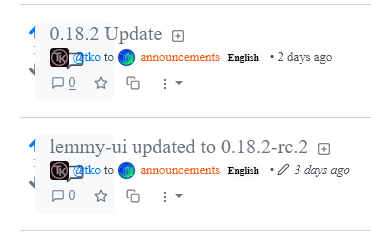Cheers to that!
tko
There is legitimately good wine at just about every price point... You definitely should not write off a wine just because of the price.
And conversely, there's lots of BAD wine that's expensive.
Try everything and keep track of what you like! Your wine drinking experience will improve, and it'll probably cost you less to boot!
How do you counter the arguments about strategic votes in Cardinal voting systems? Those arguments are explained here: https://betterchoices.vote/Cardinal
Put simply, Approval is still subject to strategic voting that undermines the purpose of the system. In practice, nobody is going to approve of a centrist candidate from the other party because that approval vote might be the only reason that their party loses.
I'm so glad I found this site! I think I've been converted to a Consensus Voting proponent instead of Instant Runoff.
You can read more about it here: https://betterchoices.vote/ConsensusVoting
Do you have a link that explains what you're talking about? I'm having a hard time reconciling my understanding of Ranked Choice (with instant runoff) with the downfalls you describe.
Edit: I came across this: https://betterchoices.vote/Cardinal It explains the spoiler problem with Ordinal voting systems, but also illustrates problems with Cardinal voting systems. Interesting stuff.
Gotcha... as long as you understand that any device that receives that traffic can see exactly what's in it! (no sarcasm intended at all... if you're informed of the risk and OK with it, then all is well!)
What's your reason for using HTTP? That seems like a really bad idea this day in age, ESPECIALLY if that's something you're going to make available on the internet.
A reverse proxy is basically a landing place that acts as a middle man between the client and the server. Most people set it up so that all traffic on 80 or 443 go to the reverse proxy, and then the reverse proxy gets the correct website based on the host header of the request.
If you are currently serving multiple websites on your server, then that means you are serving each website on a different port.
So, just make sure that the reverse proxy is serving on a port that is not used by your other sites. It will only respond on it's own port, and it will only serve the site(s) that you have configured in the proxy.
You'll be fine!
I run a Nextcloud instance on my Unraid server.
I hear you... it's definitely not about one tasting better than others, but maybe more about the eating experience. I do think there's a legitimate argument about how different pasta shapes encourage different pasta to sauce ratios, but at the end of the day it's just the two elements coming together and the taste is what it is. We should all enjoy it the way we want to! I just wanted to explain why some people talk about certain sauces and certain pasta shapes "belonging" together.
It has everything to do with the consistency of the sauce and how well it sticks to the pasta. For example, spaghetti with a meat sauce isn't a great choice because the meat won't actually stick to the pasta and you'll have to scoop up that meat "manually." Better is pappardelle, which has a huge surface area that causes the meat to stick to the pasta.

I'm having a hard time imagining an accident caused by not wearing a seatbelt... I guess maybe being thrown from the vehicle and hitting a passenger in another car who was wearing a seatbelt?